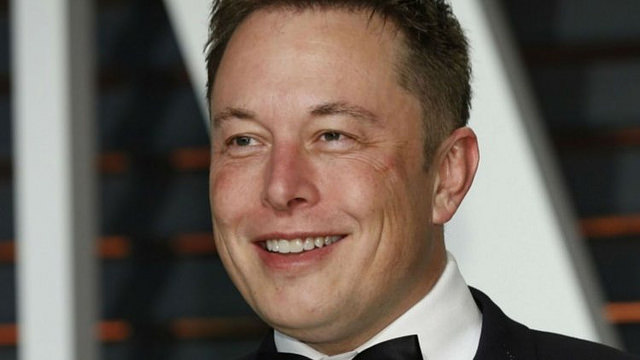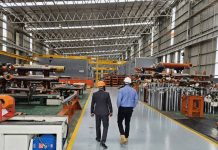There are two kinds of people – those who invested in bitcoin early and have made a fortune; and those who wished they had. But the real story behind this amazing cryptocurrency isn’t its rapid rise in value or the mystery identity of the person who created it, but the underlying technology.
That technology is called the blockchain, and it is already revolutionising banking and financial services. But the blockchain is also going to change mining – and the industry in Zambia is no exception.
What is the blockchain?
Imagine you and five friends own a safe together where you all keep your savings. Each of you has a unique key to open the safe, but for it to be opened all six of you (and each key) must be present. When money is added or taken out of the safe you and all your friends have to verify the new amount that the safe now holds. Each transaction has thus been recorded and verified by six different people, making it difficult for anyone to steal or be dishonest.
Blockchain technology, which is already revolutionising banking and financial services, is also going to change mining.
This is essentially how the blockchain works, but instead of friends verifying the transaction, verification is done by a chain of decentralised computers. Because the information is visible to everyone on the network, it is safe, secure, and impossible to tamper with. Almost any information can be stored on the blockchain, and the key strength of the technology is that it needs no central person or entity to administer it; it administers itself.
Blockchain and mining
The use of the blockchain in mining has been predicted by various consulting companies, and these forecasts are rapidly becoming reality.

De Beers, one of the world’s major diamond companies, is looking into the use of the blockchain to track its gems. This will help ensure that all diamonds mined by the company have been extracted ethically and are not sourced from conflict zones. According to De Beers CEO, Bruce Cleaver, the blockchain is “a huge public ledger as immutable as anything invented” and its use is significant for the mining industry. The blockchain would not only be used to track diamonds, but other minerals which are mined in areas plagued by conflict.
The mining of cobalt in the Democratic Republic of Congo (DRC) is an example of this. In February it was announced that blockchain technology will be used there to track cobalt from when it is mined right up until it ends up at the smelter. This would ensure that the cobalt is mined ethically and without the use of forced or child labour. Each sealed bag of cobalt, provided by a vetted artisanal miner, would be recorded onto the blockchain using a unique electronic tag, with each person in the process recording each transaction, leaving an “immutable record” of the bag’s journey.
The use of the blockchain in mining does not only ensure that minerals are sourced ethically, but will also make companies’ supply chains more efficient. BHP Billiton, a major global mining company, started using the blockchain in 2016 to track where goods and minerals were in its supply chain.
The blockchain and Zambian mining
The growing use of the blockchain in global mining suggests that it will almost certainly find useful applications in Zambia and other African countries – not just in supply-chain management, but also in helping to improve the quality of monitoring of mineral production. Some mining companies in Zambia and elsewhere have been accused of underreporting their production figures, and the use of the blockchain could go some way to confirming that the figures that companies report are correct.
Ron Smit, chief consultant on the EU-funded Mineral Production Monitoring Support Project in Zambia, agrees. “I do see how shipments of minerals, gemstones and other resources can be identified by a unique code shared across a distributed ledger, which would make it easy to confirm in different places that the shipment is the one being referred to,” he says.

How technology “fads” are often a boon for development
The use of blockchain in mining, when the technology was designed for a completely different purpose may seem strange at first, especially given the recent crash in the value of bitcoin and other cryptocurrencies.
However, this has often occurred in history – where investors back a new technology which initially seems like a failure but eventually proves to have far-reaching effects, often in other industries or applications.
For example, whilst the “dot-com” bubble saw the collapse in the value of numerous technology companies at the beginning of this century , today’s success stories – Google, Facebook and so on – were born out of the ashes, achieving their success by repurposing the pioneering technologies developed by others.
The blockchain will transform the mining industry
Although the blockchain was never invented for mining it certainly has the potential to change the industry. As demand grows for the industry to be sustainable, being able to prove that mining practices are ethical, as well as making the supply chain more transparent, will be a boon. Although the future of cryptocurrencies is uncertain, the use of the blockchain in mining is here to stay.
See also: The next mining frontier is the oceans


























